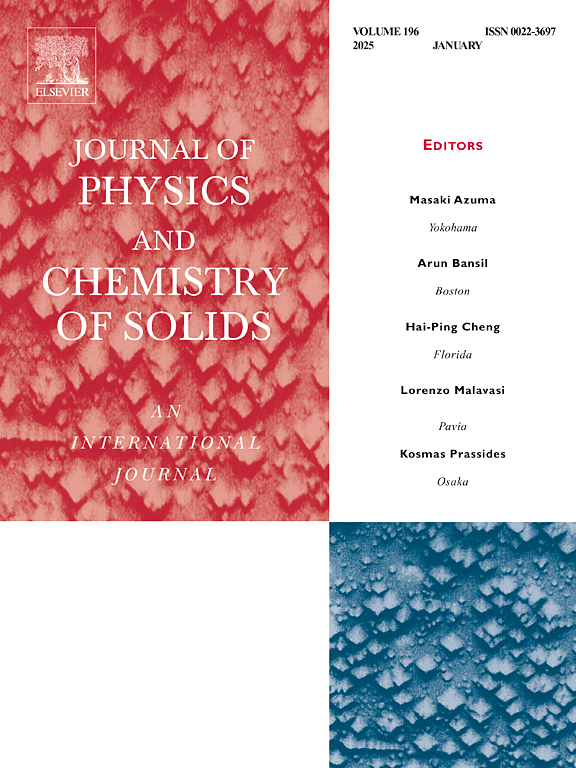Modulating phonon-electron Fano resonance in Si nanoparticles through laser exposure and properties of surrounding nanoparticles
IF 4.3
3区 材料科学
Q2 CHEMISTRY, MULTIDISCIPLINARY
引用次数: 0
Abstract
This study presents scalable and cost-effective methods for precisely modulating the phonon-electron Fano resonance in silicon (Si) nanoparticles, with potential applications in sensing, quantum technologies, and energy devices. Beyond conventional approaches reliant on laser intensity, we demonstrate that the Fano resonance can be enhanced by prolonged laser exposure, which increases electronic transitions to energy levels induced by band-edge disorder, and by strong electromagnetic field confinement achieved through multiple light scattering by non-absorbing surrounding particles. Conversely, the Fano resonance strength can be attenuated by introducing anharmonic decay channels for Si optical phonons, driven by anharmonic interactions between Si phonons and phonons of surrounding nanoparticles. These interactions disrupt the coherence essential for a strong Fano resonance, providing a controllable mechanism for weakening the effect. Experimental validation is achieved using Si nanoparticles embedded in granular media composed of zinc oxide (ZnO), monoclinic gallium oxide (β-Ga2O3), and graphite (C). By leveraging laser exposure, electromagnetic field confinement, and tailored nanoparticle environments, this work offers versatile and scalable strategies for advancing photonics, optoelectronics, thermoelectrics, and Raman-based sensing technologies.
通过激光照射和周围纳米粒子的性质调制硅纳米粒子中的声子-电子Fano共振
本研究提出了一种可扩展且具有成本效益的方法,用于精确调制硅纳米颗粒中的声子-电子Fano共振,在传感、量子技术和能源器件中具有潜在的应用前景。除了依赖于激光强度的传统方法之外,我们证明了通过长时间的激光照射可以增强Fano共振,这增加了由带边无序引起的电子跃迁到能级,以及通过不吸收周围粒子的多次光散射实现的强电磁场约束。相反,通过引入硅光学声子的非调和衰减通道,硅声子与周围纳米粒子的声子之间的非调和相互作用可以减弱Fano共振强度。这些相互作用破坏了强范诺共振所必需的相干性,为削弱这种效应提供了一种可控的机制。实验验证是将硅纳米颗粒嵌入由氧化锌(ZnO)、单斜氧化镓(β-Ga2O3)和石墨(C)组成的颗粒介质中。通过利用激光照射、电磁场约束和定制的纳米颗粒环境,这项工作为推进光子学、光电子学、热电学和基于拉曼的传感技术提供了通用和可扩展的策略。
本文章由计算机程序翻译,如有差异,请以英文原文为准。
求助全文
约1分钟内获得全文
求助全文
来源期刊
CiteScore
7.80
自引率
2.50%
发文量
605
审稿时长
40 days
期刊介绍:
The Journal of Physics and Chemistry of Solids is a well-established international medium for publication of archival research in condensed matter and materials sciences. Areas of interest broadly include experimental and theoretical research on electronic, magnetic, spectroscopic and structural properties as well as the statistical mechanics and thermodynamics of materials. The focus is on gaining physical and chemical insight into the properties and potential applications of condensed matter systems.
Within the broad scope of the journal, beyond regular contributions, the editors have identified submissions in the following areas of physics and chemistry of solids to be of special current interest to the journal:
Low-dimensional systems
Exotic states of quantum electron matter including topological phases
Energy conversion and storage
Interfaces, nanoparticles and catalysts.

 求助内容:
求助内容: 应助结果提醒方式:
应助结果提醒方式:


